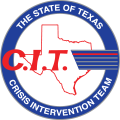Cross Creek Hospital Together With Ascension Seton helps children, adolescents, and adults who are struggling with self-harm through an unmatched quality of care and support. Located in Austin, TX, Cross Creek Hospital Together With Ascension Seton is the leading provider of self-harm treatment.
Learn More About Self-Harm Treatment
Learn more about self-harm treatment at Cross Creek Hospital Together With Ascension Seton in Austin, TX
Self-harm refers to behaviors in which individuals intentionally inflict pain upon themselves in some way. A common misconception about self-injury is that the individuals who engage in such behaviors are doing so in an attempt to end their life or as a way of gaining attention, however, this is typically not the case. The majority of people who self-harm do so as a means of trying to find something over which they can have control because they do not have control over other aspects of their lives. Furthermore, many individuals self-harm as a means of numbing emotional pain that they experience but do not know how to appropriately cope with. Others still will participate in self-harming behaviors as a way to slow down the presence of racing thoughts or obsessions that they cannot otherwise distract themselves from. There are countless ways in which individuals can purposely harm themselves, but the most common include cutting, burning, biting, pulling out hair, picking at skin, scratching, banging one’s head against hard objects, or purposely breaking one’s bones.
Engaging in self-harming behaviors can rapidly consume an individual’s life. And while these acts have the potential to elicit many detriments in an individual’s life, there are viable treatment options available that can help people put an end to these devastating compulsions.
Statistics
Self-harm statistics
Self-harm is a behavior that is typically done in private, so it is difficult for researchers and professionals in the field of mental health to accumulate any truly accurate statistics regarding its prevalence. However, some estimates have been provided that state that, in the United States, approximately one in five women and one in seven men purposely inflict harm upon themselves in some way. Additionally, surveys that were distributed to groups of adolescents showed that about 10% of youth between the ages of 12 and 18 admit to partaking in self-harming behaviors at some point in their lives.
Causes and Risk Factors
Causes and risk factors for self-harm
Researchers believe that there are multiple causes and risk factors that can ultimately contribute to the development of self-harming behaviors. Such causes and risk factors are described briefly in the following:
Genetic: As self-harm is symptomatic of a mental health condition, and mental illnesses are known to run in families, it can be inferred that there is a genetic component to the onset of self-mutilation. In other words, individuals who have a family history of mental illness are more susceptible to experiencing the onset of such illnesses themselves, of which self-harm may be a symptom.
Environmental: There are many environmental factors that can be attributed to the onset of self-harming behaviors. For example, individuals who have been subjected to abuse may find comfort in the act of self-injury because they are able to control the pain they are experiencing as opposed to being the victim of pain inflicted by another person. Additionally, people who grow up in chaotic home environments or who are exposed to chronic levels of stress may find solace in self-harming behaviors because it gives them a sense of power and control over something when they do not have control over other aspects of their lives.
Risk Factors:
- Personal history of depression or other mental health conditions
- Family history of mental illness
- Being female
- Low self-esteem
- Peer pressure (especially for adolescents)
- Experiencing a trauma
- Being the victim of physical, emotional, or sexual abuse and/or neglect
- Lacking appropriate coping skills or healthy support networks
- Experiencing the death of a loved one
- Lack of parental involvement
- Being exposed to crime and/or violence
- Family or personal history of substance abuse
Signs and Symptoms
Signs and symptoms of self-harm
The symptoms that will be exhibited by an individual who is engaging in self-mutilation will vary depending upon the specific method that one is using to inflict the pain. Additionally, the length of time during which one has been self-harming can also impact the type of symptoms that are displayed. Due to the fact that self-harm is an act that is typically done in private, however, it can be difficult to determine when someone is engaging in such behaviors. If you believe that your loved one may be purposely harming him or herself, take note of the following signs and symptoms:
Behavioral symptoms:
- Wearing certain types of clothing, regardless of the weather, in an attempt to hide injuries (e.g. wearing long-sleeves despite it being hot outside)
- Isolating oneself from family and friends
- When questioned, explaining away chronic injuries as being the result of “accidents”
- No longer participating in activities that were once enjoyed
- Refusing to go to school
- Frequently being absent from work
Physical symptoms:
- Frequent scratches, cuts, or scrapes
- Burn marks
- Broken bones
- Wounds that do not heal in a timely manner
- Patches of missing hair
- Frequent bruising
- Scarring
Cognitive symptoms:
- Difficulty concentrating due to being consumed with thoughts of wanting to self-harm
- Episodes of derealization
- Episodes of depersonalization
- Memory disturbances (including lapses in memory)
- Dissociation
- Inability to control impulses
Psychosocial symptoms:
- Feelings of loneliness
- Feelings of helplessness
- Feelings of hopelessness
- Feelings of shame and guilt
- Increased feelings of anxiety, especially when unable to self-injure
- Low self-esteem
- Depression
- Emotional instability / oscillating moods
- Periods of emotional numbness or emotional detachment
- Agitation and irritability
- Suicidal ideation
Effects
Effects of self-harm
When an individual engages in self-harming behaviors, he or she is putting him or herself at risk for experiencing a vast array of negative physical effects. Depending upon the method that one uses in order to injure him or herself, the following effects have the potential to occur:
- Infected wounds
- Permanent scarring
- Broken bones / improper healing of broken bones
- Anemia
- Irreversible tissue damage
- Permanent numbness or weakness in certain parts of the body
- Multi-organ failure
- Nerve damage
- Hemorrhaging
- Unintentional death
In addition to negative physical effects, people who chronically self-harm are also at a heightened risk of experiencing several types of negative psychological effects. Examples of such effects include:
- Social withdrawal and isolation
- Disturbed relationships
- Familial strife
- Ongoing, intrusive feelings of guilt, shame, and/or disgust with oneself
- Developing an addiction to drugs and/or alcohol
- Decline in academic or occupational functioning, potentially leading to academic failure or job loss
- Pervasive, all-consuming thoughts about engaging in the behavior itself
- Persistently decreasing self-esteem
- Onset of symptoms of other mental health conditions
- Suicidal ideation
Co-Occuring Disorders
Self-harm and co-occurring disorders
The presence of self-harming behaviors is indicative of the presence of a mental health condition. The most commonly cited disorders of which self-injury is symptomatic include:
- Bipolar disorder
- Depressive disorders
- Eating disorders
- Obsessive-compulsive disorder (OCD)
- Generalized anxiety disorder
- Panic disorder
- Other anxiety disorder
- Schizophrenia
- Schizoaffective disorder
- Post-traumatic stress disorder (PTSD)
- Substance use disorders
- Borderline personality disorder

















